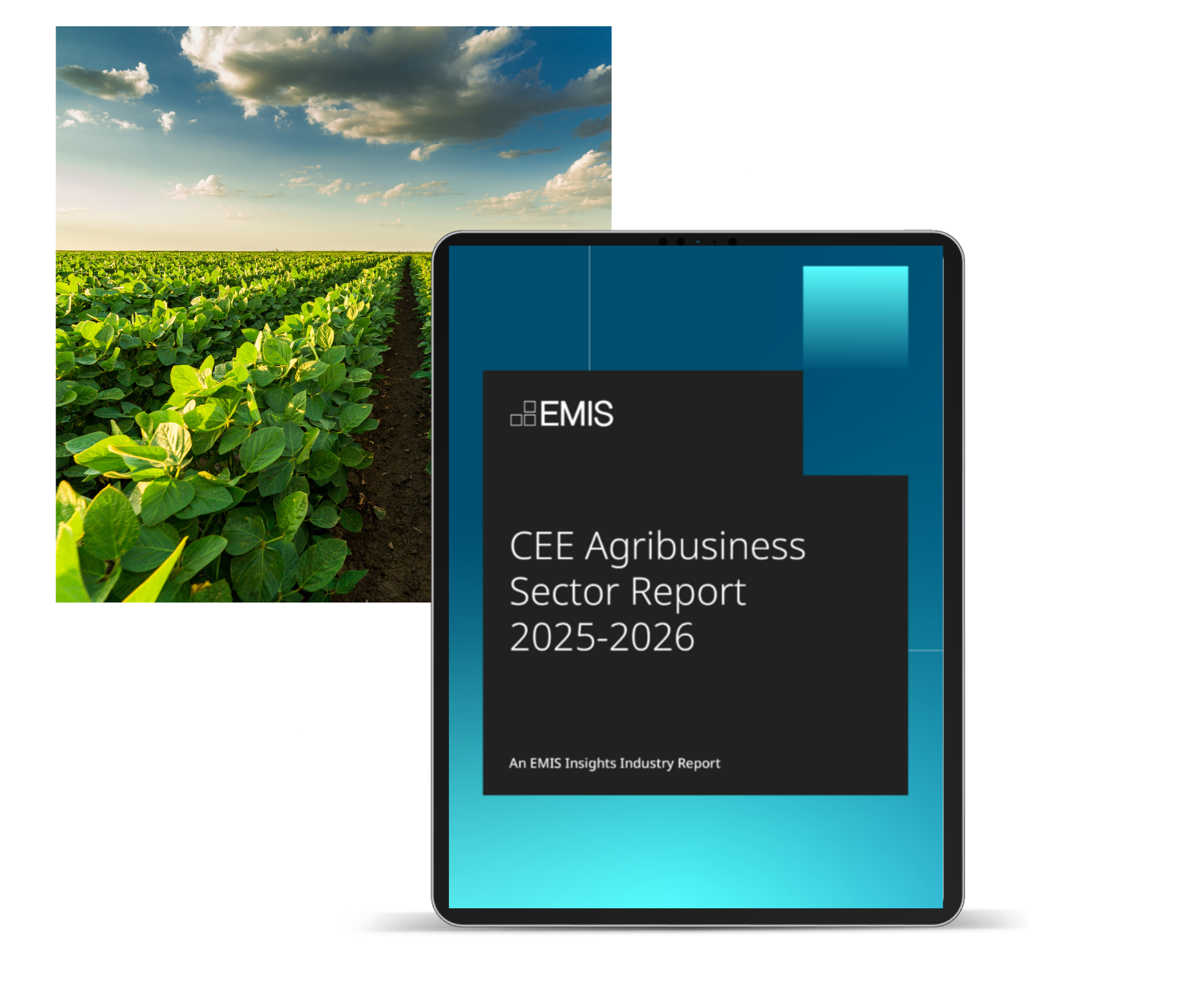About the Report
- Contribution of Agriculture to the Economy
The EU-27 is home to around 10 million farms and some 17 million people working regularly in the agriculture sector. The industry accounts for a small percentage of the Member States' national GDPs, but is subject to the 27-nation bloc's only, oldest and costliest common policy. Agriculture is responsible for providing various, abundant, affordable, safe and good quality food products to EU citizens and the bloc's foreign trade partners. At the same time, agriculture is one of the sectors with a very high environmental impact potential as it plays a key role in preserving biodiversity and purity of soil, air and water resources,as well in limiting carbon dioxide emissions.
The agriculture sector's GVA contributed 1.3% to the EU GDP in 2023, Eurostat data showed.
CEE Agriculture sector's GVA:
Among the CEE countries subject of this report (Poland, Czechia, Hungary, Romania, Slovakia and Croatia) agriculture GVA claimed the highest percentage of GDP in Romania (3.88%), Croatia (3.36%) and Hungary (2.8%). Poland, the leader in agriculture output in the CEE region, reported a GVA share in GDP of 2.75%, just below that of Hungary and exactly equal to the average for the six countries. Of all six CEE countries Czechia reported the lowest share of GVA in GDP in 2023, of 1.73%, while Slovakia posted a share of 2%.
- Employment in Agriculture
In the CEE region, approximately 1.77 million people were employed in agriculture in 2023. Poland's agriculture workforce accounted for 69% of the total, followed by Hungary with 11.48% and Czechia with8.42%. Romania's employed in agriculture claimed a share of 6.9% of the CEE total, leaving 2.72% for Slovakia and 1.47% for Croatia.
There are many jobs indirectly linked to farming. Examples of "upstream" sectors related to agriculture include machinery, buildings, fuel, fertilisers and healthcare for farm animals. "Downstream" activities in turn are preparing, processing, and packaging food, as well as food storage, transport and retail.According to Eurostat estimates, sectors linked to agriculture together provide approximately 40 million jobs in the EU-27. -
Agricultural Production
The EU-27 reported agricultural production value at EUR 537.08bn in 2023, down by 1.53% y/y. For comparison, in 2022, the agricultural production of the 27-nation bloc jumped by 19.71% y/y, surpassingpre-COVID-19 levels, Eurostat data showed.
The agricultural production of the six CEE countries (Poland, Czechia, Hungary, Romania, Slovakia, and Croatia) subject of this report together totaled EUR 83.69bn, down by 2.93% y/y in 2023, after soaring higher than the EU value, by 22.64% y/y in 2022. - Agricultural Prices
The prices of agriculture outputs in the CEE region as a whole were only slightly higher than in the EU-27 in2023 and 2021, marking a more substantial difference in 2022. The prices of agriculture inputs were higher in the CEE region than in the EU-27 bloc as a whole in the years between 2021 and 2024, Eurostat data and estimates showed. - External Trade in Agriculture
The CEE countries together were a net agricultural products exporter in the years between 2021 and 2023,UN Com trade data showed. In 2023, the region reported exports worth USD 48.07bn, imports totaling USD42.24bn and a resulting trade balance of USD 5.83bn.
Poland is the region's largest exporter, accounting for 51.78% of total CEE exports in 2023, followed by Romania and Hungary with respective shares of 17.6% and 12.1%. Poland is also the region's largest importer, with a share of 41.9% of the total in 2023, followed by Romania (17.28%) and Czechia (16.26%).
Of all CEE countries, Poland changed its situation the most remarkably following its accession to the EU in2004, moving away from being a net agricultural importer in 1999 on to becoming a substantial net exporter of agri-food products and regional leader in absolute terms.
![]()
Are you interested in the full version of the report & more insights into the agribusiness sector,
more data, and analysis from the world's fastest-growing markets?
Ready to explore EMIS?

What sets EMIS apart?
EMIS is a leading curator of multi-sector, multi-country research for the world’s fastest growing markets.
We provide a unique combination of research from globally renowned information providers, local and niche specialist sources, our own proprietary analysis, and powerful monitoring and productivity tools.
EMIS delivers trustworthy intelligence for over 370 industry sectors and over 12m companies across 197 markets. Everything you need in one place where actionable insights are facilitated by leading technology.
